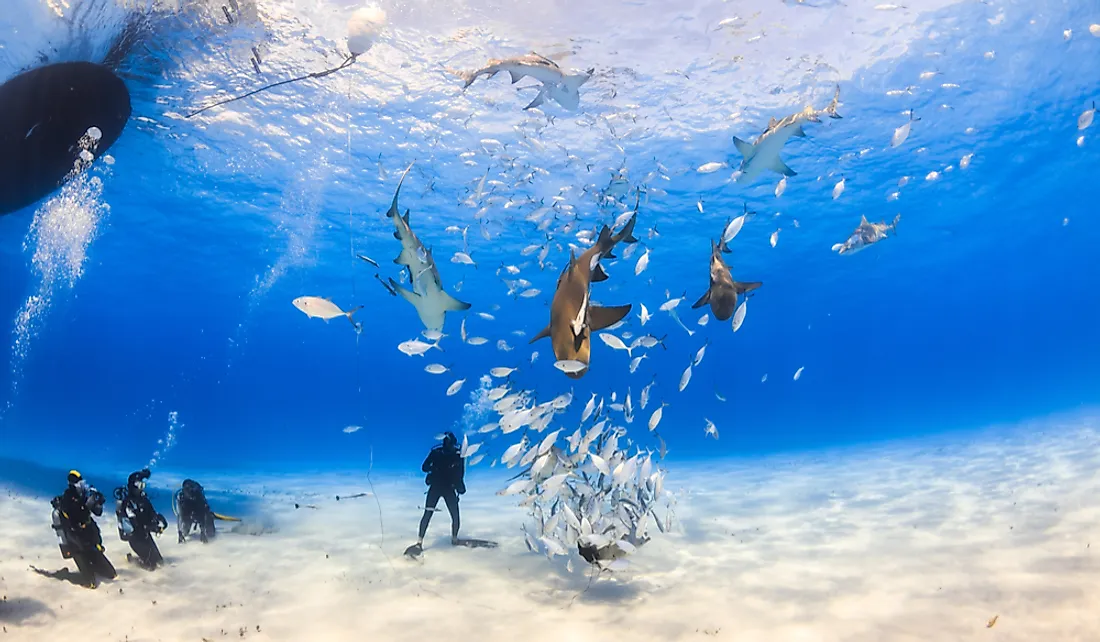What Are The Biggest Industries In The Bahamas?

The Bahamas is a country in the Caribbean located in the Lucayan Archipelago. The country is made up of more than 700 islands, islets, and cays within the Atlantic Ocean. The Bahamas is the wealthiest nation in the Caribbean and the 3rd richest country in the Americas. Although the Bahamas is still a developing nation, it has one of the most stable economies in the region and the country had a population of 391,232 people in 2016 while its economy is heavily reliant on offshore banking and tourism. In 2012, the country had a GDP of $11.04 billion and GDP per capita of $31,300. In the same year, it was estimated that the service industry accounted for 90.8% of the GDP while industry accounted for 7.1% of the GDP and agriculture accounted for 2.1% of the country's GDP. Some of the main industries in the Bahamas include banking, tourism, oil transshipment, cement, pharmaceuticals, salt, aragonite, and rum among others. The population of Bahamas is concentrated mainly in the urban areas particularly in Nassau and Freeport; however, there are traditional small farming and fishing activities in the villages particularly in the south-eastern islands. The Bahamas gross national product per capita is one of the highest in the Caribbean region.
Tourism
Tourism in the Bahamas is an important economic activity, and it is estimated that it contributes about 60% of the country's GDP while employing almost half of the country's labor force. In 2012 Bahamas received about 5.8 million tourists out of which 70% were cruise visitors. In 2016 more than 3 million tourists arrived in the Bahamas and the majority was from Canada and the United States. There has been a steady growth in tourist arrivals in the country over the years, and similarly, there has been a boom in construction of new resorts, hotels, and residences which has seen tourism industry growing for several years. The government has also taken a proactive approach true to market the country as a tourist destination in Latin America, Europe, the Far East, Canada, and the US.
Agriculture and Fisheries
The natural resources of the Bahamas have allowed for the agriculture and fish industries to account for about 5% of the country's GDP. The country exports fish and lobsters although it does not raise them commercially. There is no commercial large scale agriculture in the Bahamas, and most of the agricultural output is consumed locally. The country imports foodstuffs valued at $250 million every year, and it represents approximately 80% of the food consumed in the country. The government is planning to expand food production in the country and reduce imports of foodstuffs to generate more foreign exchange. The government has tried to seek foreign investment to increase agricultural output, particularly in food items. Some of the areas the government is targeting to increase in production include pork and beef production and processing, dairy production, fruits and nuts, vegetables, and shrimp farming (mariculture). Only a small portion of the land is arable in the Bahamas on the soils are shallow. The sunny climate in the Bahamas is suitable for cultivation of fruits such as mangoes, bananas, guavas, pineapple, tomatoes, sapadilla, grapefruit, soursop, and sea grape among others.
Financial Services
Financial services industry is the second most important industry in the Bahamas and accounts for about 17% of the GDP. The country adopted the International Business Companies Act (IBC) in 1990, which transformed the nation into one of the leading financial centers in the world. The Act reduced and simplified the procedure and cost of incorporating an offshore company in the country. After only nine years following the adoption of the act, Bahamas had more 84,000 IBC companies in the country. The Bahamas has a friendly tax regime in the country, and all foreign investors do not pay tax on personal income, inheritance, capital gains, or gifts. The country has become an international center for banking and finance and it has attracted numerous financial institutions because of its reputation and stability. There are more than 250 banking and trust companies from 25 different countries around the world which have been licensed to do business in the Bahamas. The laws in the country protect the right to privacy of bank clients, and the country has been referred to as a tax haven. The country has strict laws against illegal financial activities like money laundering. The Bahamian Central Bank regulates all financial entities in the country including foreign organizations operating in the country, by providing a safe environment for banks focusing on private banking, portfolio management, and mutual fund operations.
Manufacturing and Processing
There are few industries in the Bahamas and some of the notable include the pharmaceutical company, PharmaChem Technologies in the Freeport city and the BORCO oil company also found in the city of Freeport, which is involved in transshipment of oil in the country. Other major companies in the country include Commonwealth Brewery in the capital city of Nassau, which manufactures beers such as Heineken, Kalik, and Guinness; and Barcadi Corp in Nassau, which distills rum for export to the US and the EU markets. There is also sun drying of salt sea facility located in the Great Inagua and a cruise ship repair at Freeport.
Prospects of the Bahamian Economy
In 2017, the GDP of Bahamas was valued $12.16 billion and represented 0.02% of the world economy. In the same year, the GDP expanded by 2.5% from the 2016 values. From 1990 to 2017, the annual growth rate averaged about 1.6% and recorded the lowest growth of -4.20% in 2009 and the highest of 7.90% in 1997. According to econometric models by trading economics, it is projected that the Bahamas GDP will stand at $13.6 billion by 2020. It is also expected to grow at a rate of 2.7% annually.











